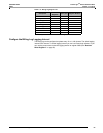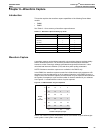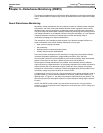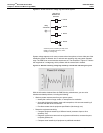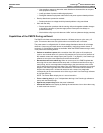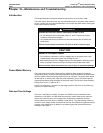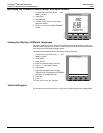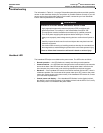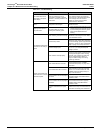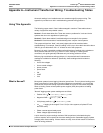
© 2011 Schneider Electric. All Rights Reserved.
63230-500-225A2 PowerLogic
TM
Series 800 Power Meter
3/2011 Chapter 10—Maintenance and Troubleshooting
69
Chapter 10—Maintenance and Troubleshooting
Introduction
This chapter describes information related to maintenance of your power meter.
The power meter does not contain any user-serviceable parts. If the power meter requires
service, contact your local sales representative. Do not open the power meter. Opening the
power meter voids the warranty.
Power Meter Memory
The power meter uses its non-volatile memory (RAM) to retain all data and metering
configuration values. Under the operating temperature range specified for the power meter,
this non-volatile memory has an expected life of up to 100 years. The power meter stores
its data logs on a memory chip, which has a life expectancy of up to 20 years under the
operating temperature range specified for the power meter. The life of the internal battery-
backed clock is over 10 years at 25°C.
NOTE: Life expectancy is a function of operating conditions; this does not constitute any
expressed or implied warranty.
Date and Time Settings
The clock in the PM810 is volatile. Therefore, the PM810 returns to the default clock
date/time of 12:00 AM 01-01-1980 each time the meter resets. Reset occurs when the
meter loses control power or you change meter configuration parameters including
selecting the time format (24-hr or AM/PM) or date format. To avoid resetting clock time
more than once, always set the clock date and time last. The PM810LOG (optional module)
provides a non-volatile clock in addition to on-board logging and individual harmonics
readings for the PM810.
DANGER
HAZARD OF ELECTRIC SHOCK, EXPLOSION, OR ARC FLASH
• Do not attempt to service the power meter. CT and PT inputs may contain
hazardous currents and voltages.
• Only authorized service personnel from the manufacturer should service the
power meter.
Failure to follow these instructions will result in death or serious injury.
CAUTION
HAZARD OF EQUIPMENT DAMAGE
• Do not perform a Dielectric (Hi-Pot) or Megger test on the power meter. High
voltage testing of the power meter may damage the unit.
• Before performing Hi-Pot or Megger testing on any equipment in which the power
meter is installed, disconnect all input and output wires to the power meter.
Failure to follow these instructions can result in injury or equipment damage.



